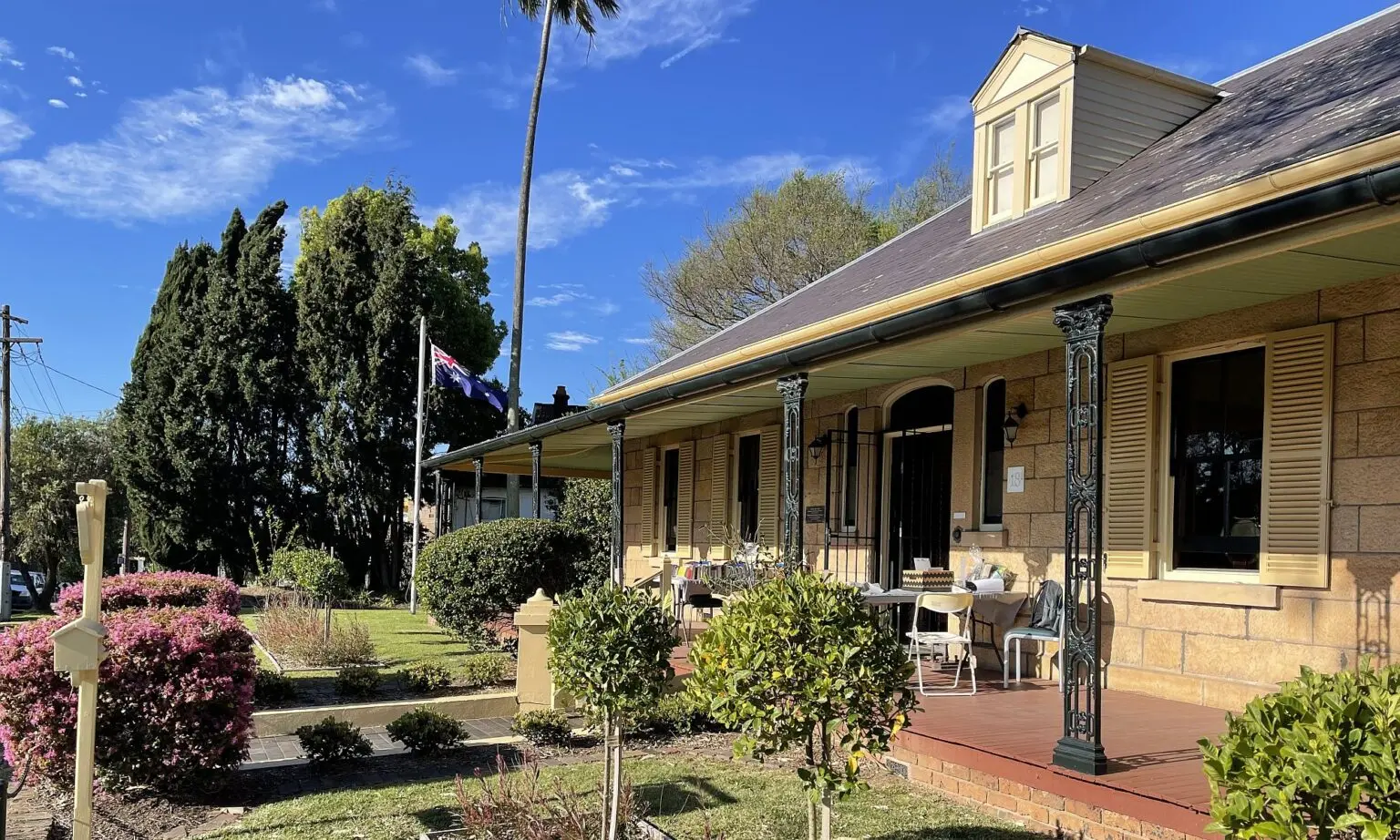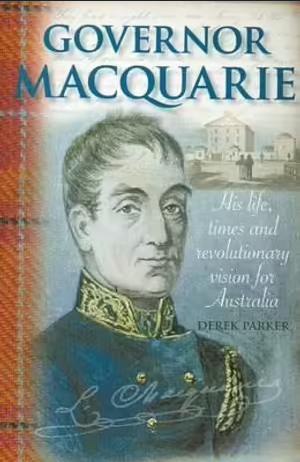(A talk delivered at St. Michael’s Church, Hurstville on the occasion of its Centenary in 1987 by Alderman R. W. Rathbone)
There is some doubt about when Michael Gannon was actually born. His marriage certificate and his convict records all indicate that he was born in 1798 but his death certificate would suggest it was the year 1800. There is no dispute about the fact that he was born in the town of Mullingar in County Westmeath, Ireland, the son of John Gannon, a carpenter and joiner and his wife Alicia.
The family were poor but God-fearing and Michael was given what little education they could afford. He was apprenticed to his father’s trade and showed some promise as a woodturner but he was also the wild one of the family surviving several scrapes with the law in his teenage years.
Eventually he found lawbreaking more exciting and remunerative than carpentry and in December 1819, he was arrested and charged with highway robbery. At the Lenten Assizes in County Meath in April 1820, Michael Gannon was sentenced to transportation for life whilst his younger brother, James, received a sentence of 14 years transportation for being in possession of forged bank notes. They left old Ireland’s shores on 22nd August 1820, aboard the convict transport “Almorah” of 416 tons burthan and arrived in Sydney Cove exactly four months later.
The Convict Records held in the State Archives describe Michael Gannon in the following terms, he was aged 22, was 5’6.5″ tall with fair pockmarked complexion, brown hair and hazel eyes. In 1823 he was assigned to Joseph Broadbent, a carpenter and builder, in whose employ worked a seventeen year old chambermaid named Mary Ann Parsonage. Michael Gannon and Mary Parsonage were married the following year.
It is some indication of Michael Gannon’s personality that despite his unprepossessing appearance and in a Colony where men outnumbered women by more than three to one, a woman born free was prepared to marry a convict under a life sentence. To add to this interest, Mary Parsonage was a Protestant whilst Michael Gannon was a Catholic and they were married in an Anglican ceremony in St. Phillip’s Church, Church Hill, by the Assistant Colonial Chaplain, Rev. William Cowper.
Perhaps the clue to this unusual arrangement can be gleaned from the fact that early the next year Mary Gannon petitioned Governor Darling to have her husband legally assigned to her as a government servant which meant that Michael Gannon was hers not only by marriage but by government assignment as well.
The 1828 Census reveals that Michael and Mary Gannon and their four year old son, John, were living in Cambridge Street, Millers Point in the area now known as The Rocks and Michael was following his profession as a carpenter. On 18th July 1829, when he was granted his Ticket of Leave, Michael Gannon’s description is again recorded. He was still 5’6.5″ tall but his complexion had changed from fair to pale and the colour of his eyes from hazel to grey and by November 1835, when he was granted a Conditional Pardon his hair had already begun to turn grey and his complexion had changed from pale to ruddy (he had obviously been out in the sun). He remained 5’6.5″ tall.
During these years Gannon had worked hard. He had prospered as a carpenter and had developed into a builder and property owner. In 1843 he became the undertaker for Catholic burials within the town of Sydney and was in partnership with his brother as an auctioneer and commission agent in Lower George Street. The Depression of that year, however, played havoc with his enterprises4 and he was declared insolvent. Salvaging what he could, he obtained publican’s licence for an inn on the Cook’s River Road at Tempe and was settled on the site of today’s Government Bus Depot by 1845.
By this time Michael and Mary Gannon’s family had increased to ten. John born in 1825, Mary in 1827, Robert in 1829, William in 1831, James in 1833, Frederick in 1836, Joseph Napoleon in 1838, Alfred in 1840, Alicia in 1842 and Maria in 1845. All but Mary survived to adulthood.
Again, because of his industry, Michael Gannon prospered. In the late 1840’s he purchased land in the City, at Petersham and along the Hawkesbury River but perhaps his most important acquisition was the 1,950 acres originally granted to Captain John Townson of the N.S.W. Corps in April 1810 and sold to the enterprising ex-convict, Simeon Lord, two years later. This vast tract of country, which today covers all the suburbs of Hurstville, Allawah, Canton and West Bexley remained entirely undeveloped because there was no access from it to the settlement at Sydney. After Lord’s death in 1840 the grant had passed to John Holden and James Holt but even after the building of Forest Road between 1843 and 1848, little development took place. On 18th November 1850, they, in turn, sold it to Michael Gannon for the sum of £732 – £68 less than they had paid for it only six years before.
Almost immediately, Gannon set about realizing on his newly acquired estate. Section One covered the whole of the present day suburb of Carlton whilst Section Two covered most of West Bexley. Each section was divided into Lots ranging in size from 15 to 30 acres and these were offered to would-be purchasers on extremely generous terms financed by Gannon himself at 10 percent deposit and 6 percent interest repayable over a period of 20 years.
One of the earliest buyers was a man named George Perry who acquired the 18 acres now partly occupied by the buildings of the Sydney Technical High School in January 1854 for £160. Perry’s receipts for the land he bought are still in existence and whilst the interest payment was always made in cash, the capital repayment was made almost entirely in bags of charcoal, sucking pigs, fat pigs and on one occasion, a heifer.
By 1855 there was quite a reasonable population in the area and a number of these people ascribed to the Catholic Faith. To attend Mass, it was necessary for them to travel all the way to Sydney and even after the building of St. Patrick’s Chapel along the Rocky Point Road at Kogarah in 1865, the journey was long, arduous and inconvenient. Section One of Gannon’s land was partly bisected by a narrow, deeply rutted track later known as Willison Road and it was down that lane that the Catholic inhabit- ants of the area, by now known as Gannon’s Forest, made their way to Mass each Sunday. It is reported that the bend in today’s Willison Road at its junction with Short Street was occasioned by the early Catholic inhabitants of the district as they struck off across country to reach St. Patrick’s on their Sunday pilgrimages. The fact that this diversion actually reached the Ioggerah Road at a point occupied by Edmund English’s Koggerah Family Hotel some two miles distant from the church suggests that the diversion catered for both the physical as well as the spiritual comfort of those who used it.
No doubt out of concern for the convenience of the Catholic residents of Gannon’s Forest and the fact that the only school in the district was a tumble-down affair conducted under the auspices of the Church of England, Gannon donated a site for the erection of a church. On 24th November 1655, Michael Gannon of Cook’s River in the Colony of N.S.W. Innkeeper, transferred to Rev. John Bede Polding, Roman Catholic Archbishop and Rev. Daniel Maurus O’Connell, Roman Catholic Clergyman, that parcel of land in the County of Cumberland, Parish of St. George commencing at a marked stump on the New Line of Road to the Illawarra comprising all ways, lights, sewers, watercourses, easements and appurtenances for the erection of a Roman Catholic Church and no other purpose whatsoever. The sum paid by the Church was a token ten shillings and the deed of transfer was executed and witnessed by Gannon’s solicitor son, Frederick.
Michael Gannon was now 57 years of age. His family was growing up and were doing very well. Frederick was a solicitor, Alfred a wealthy land speculator, William a prominent race horse owner, his champion stallion, “Arsenal” winning the 1886 Melbourne Cup. William was later to become the licensee of the prestigious Petty’s Hotel. Gannon’s daughter, Maria, was also to achieve some prominence as the mother of Major R. W. Lenehan, the controversial Breaker Morant’s commanding officer during the Boer War.
Gannon had won a reputation for fair dealing in business and enjoyed universal respect as a man of property, a good father and family man, a faithful member of his Church and a man of generosity and compassion. He also enjoyed considerable respect among the Colony’s Establishment for, despite his convict beginnings and his Irish ancestry, he was an unashamed loyalist and a conservative in his political allegiances. Apart from a short stint as an alderman of the St. Peter’s Council, he never sought election for any public office but he was invariably a member and Often the Chairman of the Campaign Committee of the more conservative candidate for any election in the seats of Cumberland South Riding and Canterbury which at one time or another covered this area. In particular, he was a close personal friend of the conservative Protectionist, John Lucas who s an implacable opponent of Sir Henry Parkes, was responsible for opening up the Jenolean Caves and was the author of the original White Australia Policy.
In the early 1850’s Michael Gannon gave the land on which the Church of St. Peter and St. Paul at Tempe was erected and for many years, until its abolition in 1872, he was a member of the Cook’s River Road Trust. In 1864 he had offered 8 acres of land from his estate at Hurstville to establish a public cemetery in the St. George District and in 1881, waived all claim to the land on which St. George’s Anglican Church, Hurstville stands after it was discovered the church had stood for 25 years on land that had never been legally transferred to it.
In August 1874, Michael and Mary Gannon celebrated 50 years of married life together, an occasion which saw assembled not only a devoted family but a host of other admirers as well and when Mary Gannon died in March the following year there was a further outpouring of the love and respect in which this fine pioneering couple were held. Michael was to live on for another six years, lonely, broken and embittered by the loss of his beloved helpmate and when he was finally laid to rest beside her in August 1881, it brought to an end not only a chapter in this district’s and this church’s history but the end of an era in a family that was to make its mark in many areas of endeavour in this state.
I do not know what motivated the original builders to choose the name of St. Michael as the name for this church but if it was not intentional then it was indeed a fortunate co-incidence for Michael was also the Christian name of the good, wise, far-sighted and very compassionate man who gave the land on which this church now stands.
This article was first published in the March 1990 edition of our magazine.
Browse the magazine archive.


